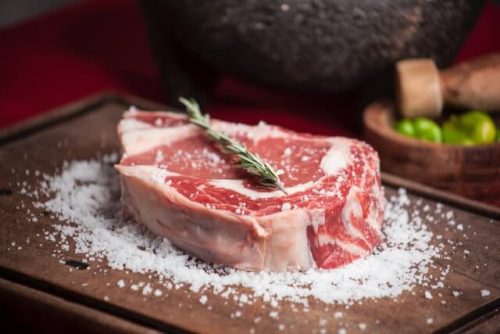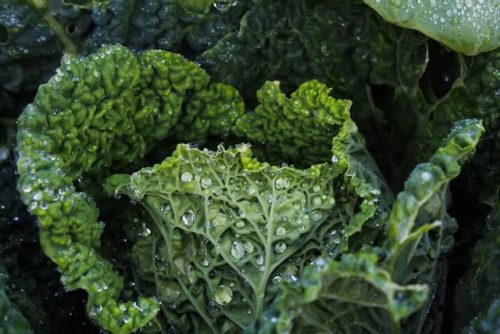Are you thinking about transitioning to a low-carb diet but not sure where to start? You’re not alone! Low-carb diets are popular for their numerous health benefits, such as weight loss, improved blood sugar control, and increased energy levels. But we know that making the switch can be challenging, especially if you’re used to eating a high-carb diet. That’s why we’re here to help! In this article, we’ll share 7 uncommon tips to help you kick-start your low-carb diet for the best results. So let’s dive in and discover how you can make your low-carb journey a success!
1. Don’t Fear Fat
One of the biggest misconceptions about low-carb diets is that they require a low-fat intake. But guess what? That’s simply not true! A low-carb diet is not the same thing as a low-fat diet, and in fact, healthy fats are essential for many bodily functions, like hormone production and absorption of fat-soluble vitamins.
So if you’re worried about fat, don’t be! There are plenty of healthy fat sources you can incorporate into your low-carb meals, like avocados, nuts, seeds, olive oil, coconut oil, and fatty fish. Not only do these foods taste great, but they can also help you feel more satisfied and prevent overeating. So go ahead and add a dollop of guacamole to your salad or cook your veggies in a drizzle of olive oil. Your taste buds and your body will thank you! Want to know more? Read the full article about fat in your low-carb diet here!
2. Experiment with Intermittent Fasting
Intermittent fasting is a popular technique that involves restricting your eating window to a certain period of time each day. It can help kick-start your low-carb diet by reducing insulin levels and promoting fat burning. Try starting with a 12-14 hour fast and gradually increasing the duration over time. Read our full beginners guide to intermittent fasting here!
3. Prioritize Protein
Did you know that protein is essential for building and repairing tissues, supporting immune function, and regulating hormones? And for those of us who are following a low-carb diet, protein is even more important to help maintain muscle mass and prevent muscle loss.
The good news is that it’s easy to incorporate protein into every meal and snack! Just aim to choose high-quality protein sources like grass-fed beef, wild-caught fish, organic chicken, and pasture-raised eggs. And if you’re a vegetarian, don’t worry – options like tofu, tempeh, and legumes can also provide a good source of protein.
By prioritizing protein, you can ensure that you’re getting all the nutrients you need to maintain optimal health on your low-carb diet. So go ahead and load up on that delicious grass-fed steak or whip up a tofu scramble for breakfast. Read our full article on why quality protein is key to your low-carb success here!
4. Find Low-Carb Alternatives to Your Favorite Foods
We know that one of the toughest parts of a low-carb diet is finding satisfying alternatives to your favorite high-carb foods. But don’t worry, with a little creativity, it’s possible to find low-carb alternatives to almost any dish!
Here are some of our favorite low-carb alternatives:
- Swap regular rice for cauliflower rice or quinoa.
- Try zucchini or eggplant noodles instead of pasta for a tasty low-carb alternative (or try our low-carb version or pasta!)
- Use lettuce wraps instead of tortillas or bread for a delicious and fresh twist on your favorite sandwiches and tacos.
- Opt for almonds or coconut flour instead of wheat flour when baking to create low-carb versions of your favorite treats.
By experimenting with low-carb alternatives to your favorite foods, you can still enjoy the flavors and textures you love while sticking to your low-carb diet. So go ahead and get creative in the kitchen – you might just discover a new favorite dish! Plus, get our “7 Delicious Low-Carb Snacks You Can Make at Home in Minutes” by clicking here!
5. Understand the Role of Salt in Your Low-Carb Diet
Did you know that salt is a crucial nutrient that plays an essential role in maintaining fluid balance, blood pressure, and nerve function in the body? And for those of us who are following a low-carb diet, salt intake can become even more important to maintain electrolyte balance.
While the recommended daily intake of salt is 2,300 milligrams (mg) per day for adults, individual needs may vary based on factors such as age, sex, activity level, and health status. And in some cases, like during hot weather or intense exercise, you may need even more salt to maintain electrolyte balance.
So what is electrolyte balance, you ask? Well, electrolytes are minerals in our body that help regulate important bodily functions like muscle contractions and heart rhythm. When there’s an imbalance of electrolytes in the body, including sodium, potassium, magnesium, and calcium, it can cause symptoms like muscle cramps, headaches, and fatigue.
To avoid electrolyte imbalance while following a low-carb diet, it’s important to increase your salt intake, eat potassium-rich foods, supplement with magnesium, and stay hydrated. So go ahead and sprinkle a little extra salt on your low-carb meals, munch on a banana for a potassium boost, and drink plenty of water to keep those electrolytes in balance. Read the full article “The Role of Salt in Your Low-Carb Diet: How to Avoid Electrolyte Imbalance” here!
6. Understand the Importance of Fiber in Your Low-Carb Diet
Did you know that fiber is a type of carbohydrate that the body can’t digest, but it’s essential for maintaining digestive health and overall well-being? That’s right, fiber has some pretty impressive benefits, like promoting digestive health, regulating blood sugar, and supporting weight loss.
The recommended daily intake of fiber is 25 grams per day for women and 38 grams per day for men. Unfortunately, many people don’t get enough fiber in their diets, with the average American consuming only 15 grams per day.
But don’t worry, there are plenty of ways to incorporate more fiber into your low-carb diet! Focus on non-starchy vegetables like broccoli, cauliflower, spinach, and kale. Choose high-fiber fruits like berries, opt for low-carb grains like quinoa, oats, or barley, snack on nuts and seeds, and consider taking a fiber supplement like psyllium husk.
By adding more fiber to your low-carb meals, you can support your digestive health, regulate blood sugar, and promote weight loss. So go ahead and load up on those leafy greens and chomp on some crunchy nuts. Want to know more? Get the full article here!
7. Go Beyond Meat and Incorporate Plant-Based Proteins into Your Low-Carb Diet
While meat is a popular source of protein, there are plenty of plant-based options that can be incorporated into a low-carb diet. Legumes, tempeh, tofu, seitan, nuts, seeds, and non-dairy milk are all great options for adding some plant-based protein to your low-carb meals.
Incorporating these plant-based proteins into your low-carb diet is not only easy, but it’s also delicious! You can swap out meat for tempeh or tofu in stir-fries or salads, make a lentil or chickpea salad with vegetables and a vinaigrette dressing, add nuts and seeds to your salads or yogurt, make a seitan stir-fry with vegetables and a low-carb sauce, or use non-dairy milk as a base for smoothies or in your coffee.
By going beyond meat and incorporating plant-based proteins into your low-carb diet, you can easily meet your protein needs while maintaining a low-carb lifestyle. So why not try adding some chickpeas to your salad or stir-frying some tempeh for dinner tonight?
Making the transition to a low-carb diet can be daunting, but fear not! By incorporating these 7 uncommon tips, you can easily kick-start your low-carb diet for the best results.
Don’t be afraid of healthy fats, experiment with low-carb veggies, prioritize protein, find low-carb alternatives to your favorite foods, and make sure to understand the importance of salt and fiber in your diet. Plus, don’t forget to go beyond meat and add some plant-based proteins to your meals.
By taking a holistic approach to your low-carb diet, you can achieve optimal health and wellness while enjoying delicious and satisfying meals. So go ahead, get creative, and try out some of these tips. Plus, get the full article “Discover the Power of Plant-Based Protein: Essential Tips for Incorporating Plant-Based Proteins into Your Low-Carb Diet” by clicking here!








